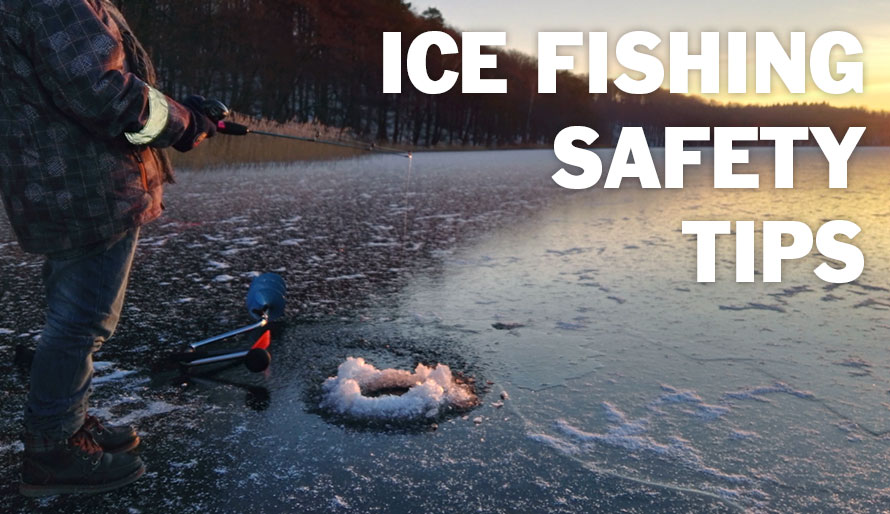The weather is getting colder, and we’re going to be dealing with chilly air and frozen water soon enough here at Sylvan beach. Despite the frost on the grass in the morning it’s not time to get out on the lake for ice fishing just yet.
But once you’re out on the lake for ice fishing, safe ice is the number one consideration. A minimum of three to four inches of solid ice is the general rule for safety. Ice thickness, however, is not uniform on any body of water. The guidelines presented here are based on clear, blue, hard ice on non-running waters. Remember, your own good judgement is essential!
The American Pulpwood Association has developed a table for judging the relative safety of ice on lakes and streams. This is just a guide; use your own good judgement before going out on any ice. Avoid areas of moving water, including where streams enter the lake, and around spillways and dams.
| Ice Thickness | Advised Maximum Weight |
|---|---|
| 2 inches | one person on foot |
| 3 inches | group in single file |
| 7.5 inches | one car (2 tons) |
| 8 inches | light truck (2.5 tons) |
| 10 inches | truck (3.5 tons) |
| 12 inches | heavy truck (7-8 tons) |
| 15 inches | 10 tons |
| 20 inches | 25 tons |
Note: This guide is based on clear, blue, hard ice on non-running waters. Slush ice is about 50 percent weaker. Clear, blue ice over running water is about 20 percent weaker. Many ice anglers do not like to fish on less than five inches of ice, and do not like to drive a pickup truck on less than 15 inches of ice. Use common sense!
Be cautious in areas where “bubblers” are used to protect docks. They can produce thin, unsafe ice some distance away. Be especially alert in areas near shore, over moving bodies of water and on lakes and ponds where streams enter or exit.
- Don’t go out on the ice too early. Going out on the ice when the ice is too thin could result in taking a dip in the icy water and putting yourself in extreme danger.
- Don’t go out along, bring a friend along when you go ice fishing. They not only keep you company, but if things go dicey they can help you out.
- Make sure your friends and family/ roommates know you’re going out on the ice.
- Drill in new areas away from vegetation. Plants warm the water, making ice fishing more dangerous and spreading out drill spots helps maintain the integrity of the ice.
- Wear a life jacket when you’re out on the ice, and bring rope in case you or your fishing buddy falls in.
- Be safe.
The colder weather brings about tons of fun seasonal activities in Sylvan Beach, but along with these activities you’re gonna want to stay safe. Now, enjoy the remaining sunshine and fairly warm weather while it lasts.
Winter is coming.

